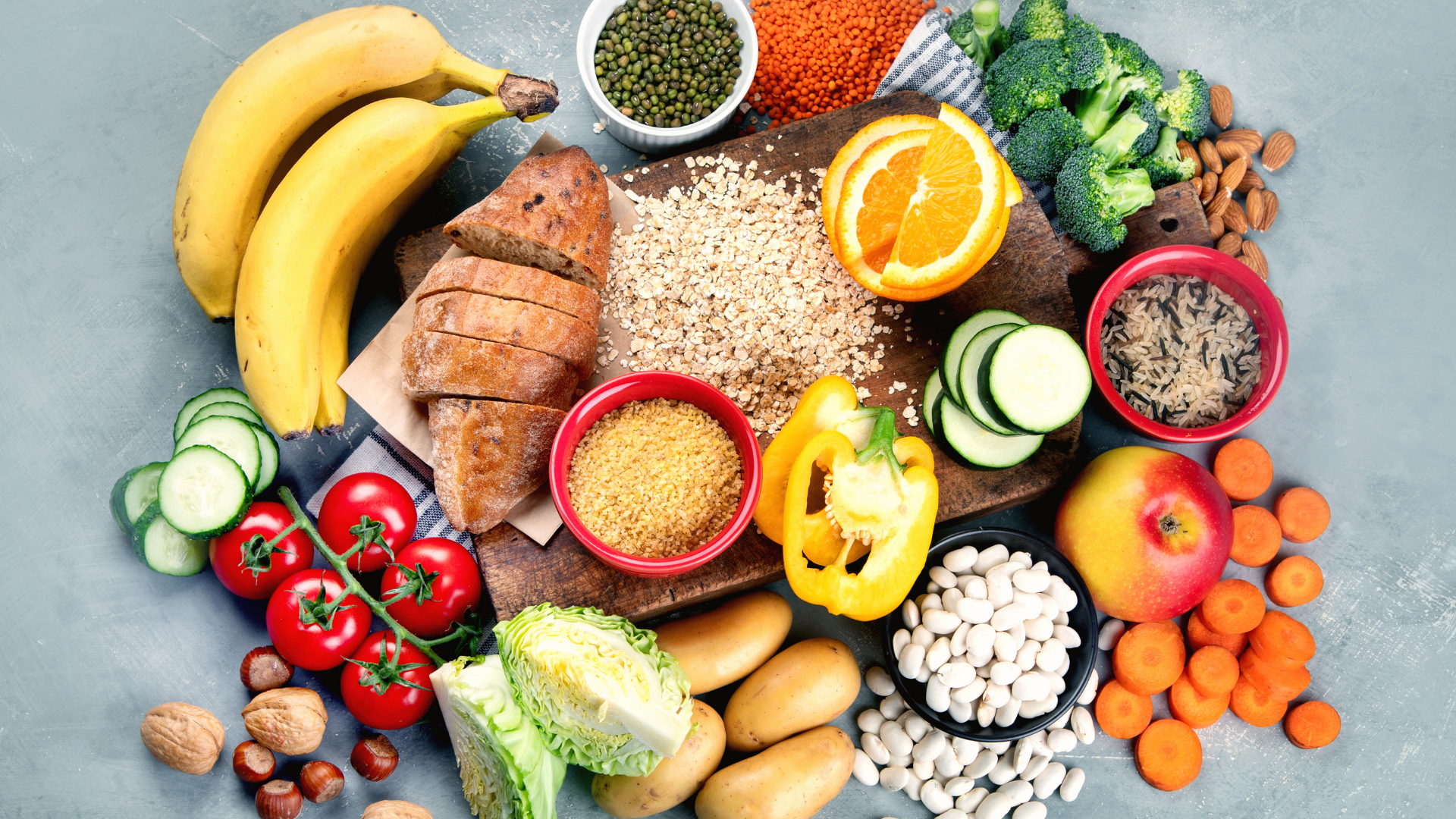Carbohydrates and fruit (which is a carb) have gotten a bad reputation. Diet culture has us believing that fruit and carbs like grains, tubers or legumes are bad for you. Not because these foods are nutritionally going to harm your health, but mostly because diet culture bases “good health” on weight-loss.
This outlook has really negatively affected people’s health journeys. We have come to believe that being healthy is a number on a scale or looking good in a swimsuit. In this messaging, we are really causing more damage than we are making things better.
Nowadays, carbs are thrown under blanket statements about their negative effects. Carbs can have negative effects on our health, but only when they are over-consumed — just like anything else we eat in overabundance. There are circumstances where someone should focus on the quantity of carbs consumed, but in all honesty, the focus should be more about the type of carbs consumed. Not all carbs are created equal. There are many foods under the carb umbrella, some of which aren’t necessarily nutritionally dense, like the sugary and processed foods that we often over-consume. By putting more focus on the quality than the quantity, carbs become a benefit to our health, not a problem.
Let’s break down what a carbohydrate is first.
Carbohydrates are one of the three macronutrients, along with protein and fat. In our daily diet, their main function is to provide energy for the body. Carbs come in many different forms, from natural sugars and dietary fibre, and in other foods, such as whole grains, fruit, and vegetables. They’re also in processed foods.
In their most basic form, carbohydrates are building blocks of sugars, and are basically classified according to how many sugar units are in their molecule. Some examples of single sugar units are glucose, fructose, and galactose, also known as monosaccharides. Double sugar units are called disaccharides. The most widely known are sucrose (table sugar) and lactose (milk sugar).
Monosaccharides and disaccharides are typically known as simple carbohydrates. Then there are long-chain molecules, such as starches and dietary fibres, which are known as complex carbohydrates.
To keep it simple and more relatable, here are some different names that represent different carbohydrate groups (which are broken down further below the list):
- sugars, which can be broken down into the following groups:
- intrinsic sugars — naturally-present sugar in fruits and vegetables
- extrinsic sugars — added sugars in processed foods, including fruit juices
- simple and complex carbohydrates
- resistant starch
- dietary fibre
- prebiotics
The different names and groups come from the fact that carbohydrates are classified depending on their chemical structure, their role in the body or their source in our diet. You can simplify it more by saying carbs come as sugar, starch or fibre.
That being said, while not all carbohydrates are the same, they have the same basic purpose in the body, which is to provide energy. However, this basic understanding can sometimes mislead you into thinking it doesn’t matter where you get your carbs from. The source of carbs does matter, though, as some carbs are devoid of nutrients and some are full of nutrients. The carbs that are full of nutrients give more than just energy — they also help with gut health and mental clarity and provide vital minerals and vitamins.
When choosing your carb sources, putting more focus on intrinsic sources like complex carbs, whole grains, and resistant starches from fruits and vegetables, give you more nutritional benefits.
There are some grains, fruits, and vegetables that contain more fibre than others. Some are considered resistant starches that provide the body with prebiotics, which are crucial to our health. Adding resistant starches to your diet is a great way to improve the balance of your gut microbiome. Resistant starch is resistant to digestion in the small intestine and ferments in the large intestine. This fermentation acts as a prebiotic and feeds the good bacteria in the gut.
Some great sources of resistant starch are:
- Plantains and green banana — as bananas ripen, they change to a regular starch
- Legumes and peas — white beans and lentils are the highest in resistant starch
- Oats (uncooked)
- Cooked and cooled grains like rice
- Cooked and cooled potatoes
The level of resistant starch changes with heat, so keep this in mind with oats, green bananas, and plantains. Another way to benefit from resistant starch is in the cooking and cooling process of grains and potatoes.
Here are some easy ways to add resistant starch to your diet:
- Cook rice, potatoes, beans, and pasta ahead of time and then cool in the refrigerator overnight. It’s okay to reheat the starch before eating. Reheating doesn’t decrease the amount of resistant starch. You can also make cold grain or potato salads.
- Instead of cooked oatmeal, try uncooked oats soaked in a non-dairy milk or pineapple juice and make overnight oats.
- Add lentils or white beans to salads or soups.
When choosing a carb, remember to base it on fibre content and nutritional value, while limiting consumption of processed carbohydrates.
Where things get confusing is when you hear you need to cut them out completely or avoid the ones you love. Remember this is more to get quick weight-loss, not to necessarily benefit your health. When it comes to processed carbs, moderation is key.
If you have concerns about carbohydrates due to insulin resistance, diabetes, polycystic ovary syndrome or other conditions that can be negatively affected by processed carbs or a high-carb diet, make sure you see a doctor or nutritionist to find out the best way to start working on a healthier lifestyle. Avoid drastic changes to your diet without consulting a professional.




